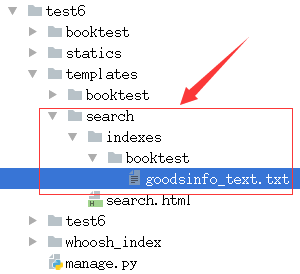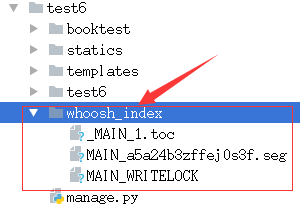创建引擎及索引
- 在booktest目录下创建search_indexes.py文件
#coding=utf-8
from haystack import indexes
from models import GoodsInfo
#指定对于某个类的某些数据建立索引
class GoodsInfoIndex(indexes.SearchIndex, indexes.Indexable):
text = indexes.CharField(document=True, use_template=True)
def get_model(self):
return GoodsInfo
def index_queryset(self, using=None):
return self.get_model().objects.all()
- 在templates目录下创建“search/indexes/booktest/”目录

- 在上面的目录中创建“goodsinfo_text.txt”文件
#指定索引的属性
{{object.gcontent}}
- 找到虚拟环境py_django下的haystack目录
/home/python/.virtualenvs/py_django/lib/python2.7/site-packages/haystack/backends/
- 在上面的目录中创建ChineseAnalyzer.py文件
import jieba
from whoosh.analysis import Tokenizer, Token
class ChineseTokenizer(Tokenizer):
def __call__(self, value, positions=False, chars=False,
keeporiginal=False, removestops=True,
start_pos=0, start_char=0, mode='', **kwargs):
t = Token(positions, chars, removestops=removestops, mode=mode,
**kwargs)
seglist = jieba.cut(value, cut_all=True)
for w in seglist:
t.original = t.text = w
t.boost = 1.0
if positions:
t.pos = start_pos + value.find(w)
if chars:
t.startchar = start_char + value.find(w)
t.endchar = start_char + value.find(w) + len(w)
yield t
def ChineseAnalyzer():
return ChineseTokenizer()
- 复制whoosh_backend.py文件,改为如下名称
- 注意:复制出来的文件名,末尾会有一个空格,记得要删除这个空格
whoosh_cn_backend.py
- 打开复制出来的新文件,引入中文分析类,内部采用结巴分词
from .ChineseAnalyzer import ChineseAnalyzer
查找
analyzer=StemmingAnalyzer()
改为
analyzer=ChineseAnalyzer()
python manage.py rebuild_index




